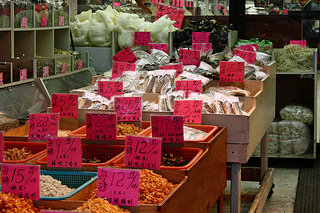China’s 10% trade goal
An ambitious target or simply a pipe dream?
Chinese trade data released over the weekend showed a widening in the trade surplus during September to USD 27.67 billion from USD 26.66 billion in August. The improvement in imports, which were up 2.4 percent year-on-year compared to -2.6 percent last month, was matched by stronger exports, which rose 9.9 percent year-on-year versus 5.5 percent expected and 2.7 percent last month.
China’s export market has been struggling over the last few months so this will come as welcome news in Beijing. China’s trade balance is being kept in surplus because imports are slowing more than exports. The decline in imports though is concerning because of the negative knock-on effect on the rest of the Asian economies. However, achieving the Chinese authorities’ goal of 10 percent growth in trade in 2012 is definitely a challenge. China’s total trade volumes in 2010 rose more than 20 percent a year and in 2011 the rate slowed to just above 12 percent a year.
Since 2002, China’s GDP in US dollar terms has seen a five-fold increase to almost USD 7.3 trillion. During that period, exports to Europe increased more than seven-fold and those to the US almost five-fold. On the other side of the equation, China has become the number one export destination for a growing number of economies as China’s total imports rose from USD 20 billion to USD 160 billion in the period.
But it seems that the crisis has finally caught up with China remains vulnerable to growth issues plaguing the rest of the world. The IMF last week cut its estimate for China’s economic growth this year to from 8 percent to 7.8 percent, saying a “hard landing” was possible although there was “a low probability” of it happening.
China has introduced a series of easing measures to restart the economy, however, they have had little impact on the economy, and authorities will need a dramatic turnaround in the fourth quarter if they are to achieve their goal of 10 percent growth in trade this year.
In terms of helpful easing measures there’s little relief in sight in the short term. The most recent suspension of customs fees on incoming and outgoing goods to China will probably have the quickest effect while infrastructure projects, reserve requirement ratio changes and interest rate cuts have a substantial time lag.
China’s inflation numbers for September released today showed CPI was bang in line with forecasts at 1.9 percent, a decline from 2.0 percent in August, while PPI continued its deflationary spiral with a fall of 3.6 percent year-on-year versus 3.5 percent expected. Food inflation is a big concern in China. Pork prices across 50 cities have been rising 0.8 percent every 10 days, while beef is up 1.5 percent on average for the same period. On the inflation front there’s no quick fix as easing measures have no effect. You can’t fight food inflation with interest rate moves.
This has meant re-evalutaion of the renminbi has taken a back seat. Since the quantitative easing measures by the Federal Reserve the dollar-yuan rate has stayed where it is at the bottom of its recent range. There has not been much mention about exchange rate issues from either Chinese or US authorities of late. Even if you want to devalue your currency to make your exports more attractive if nobody is buying them then there is no point as there is still no market to export to. China is starting to take notice. Referring to an fx trading platform last week, you’ll notice the renminbi moved to 6.2672 against the dollar, its highest level in almost two decades.
—————————————-
Liked this article? Hated it? Comment below and share your opinions with other ARB readers!





























Share the post "China’s 10% trade goal"